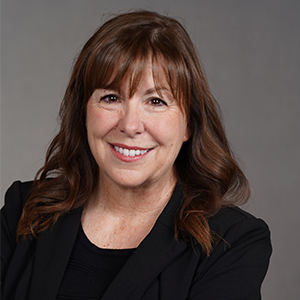In the wake of the financial crisis, the need to adapt to a whole new regulatory framework demanded significant time and resources from mortgage companies and in that pressure-cooker environment, the borrowers often got lost.
At least, that’s the view of Andrew Bon Salle, executive vice president of single-family business at Fannie Mae. Bon Salle sat down with HousingWire at the MBA National Secondary Market Conference and Expo to explain how his company is changing to put the customer first.
“We need to focus on what we are doing for the consumer and look at how we can take pain out of the process for them,” Bon Salle said. “Do we have the right products and services to meet the needs of tomorrow’s homebuyers?”
Asking that question led Fannie Mae to change the way it did business with its own customers — lenders and servicers — to find out what pain points they were encountering in working with Fannie Mae. The resulting new tools and programs equip lenders and servicers to successfully compete in the new era of mortgage lending, Bon Salle said.
These tools include Collateral Underwriter, Home Ready, Servicing Management Default Underwriter, Day 1 Certainty and a Cash Out Student Loan Refinance program.
“All the demographics show us that today’s homebuyers are not going to be tomorrow’s homebuyers, and we need to be equipped as an industry to meet the next generation,” Bon Salle said.
“I think it’s table stakes at this point. If a lender is not going to focus on the borrower experience, it’s just a matter of time before they will be left behind,” Bon Salle said.
He noted that people of all ages — not just Millennials — expect the kind of customer experience they get from Uber or Amazon, setting a high bar for financial institutions that want to attract and maintain customers.
“Consumers are going to want that for their financial products. They are getting it in banking, and in some lending products, but not in mortgages overall yet. I think we’re on the precipice of really doing something to advance and evolve the industry,” Bon Salle said.
Fannie Mae is demonstrating that user experience process for its own customers with its Lender Journeys initiative, where it sits down with lenders as they leverage Fannie Mae’s process to see how the system works for them in real time, noting how they use various tools and how they interpret various parts of the programs.
“We are really excited about trying to be a more customer-centric organization, partnering and listening,” Bon Salle said. “We have gone through a big transformation within our company, and it’s working.”
Fannie Mae increased the number of its agile teams from 90 to 145 and brought in design thinkers to make the process as intuitive as possible. The company also brought lenders into the development lifecycle so that it gets feedback in every part of the process. This also affected the way Fannie Mae releases new products.
“We stopped using the ‘Big Bang’ approach, where for two years we are piling up all this risk ahead of a big release date. With our new agile process we deliver in sprints. We’re not waiting to gold plate these programs anymore. We get it to market and test and learn,” Bon Salle said.
“We’ve gotten great feedback from industry on our speed to market improving. Our new strategy is more forward-looking and brings the customer to the center of what we do.”
Fannie Mae has concentrated its efforts on helping lenders reach new borrowers, especially borrowers who have been on the fringes of that box. Thus the company’s student loan refi program provides a path for borrowers whose student loan debt previously disqualified them from being approved for mortgage loans.
In addition, Fannie Mae rolled out its Day 1 Certainty program in October and has been pleased with the results, Bon Salle said. With confidence in the loans they are submitting to Fannie Mae, some lenders are cutting back or even cutting out their reserve. In addition, several lenders are reporting that they have cut their loan timeframes down from 50 days to 25 days. For refis, that timeline could even be 10 to 15 days. The difference to the borrower is significant, Bon Salle said.
“This is what’s really exciting in our industry — creating a better experience for the buyer. We have always gotten pretty good marks in customer service, but with these changes our MPS scores have gone up dramatically. We’re happy with that progress, but we are going to keep at it. We want to continue to learn and improve.”






